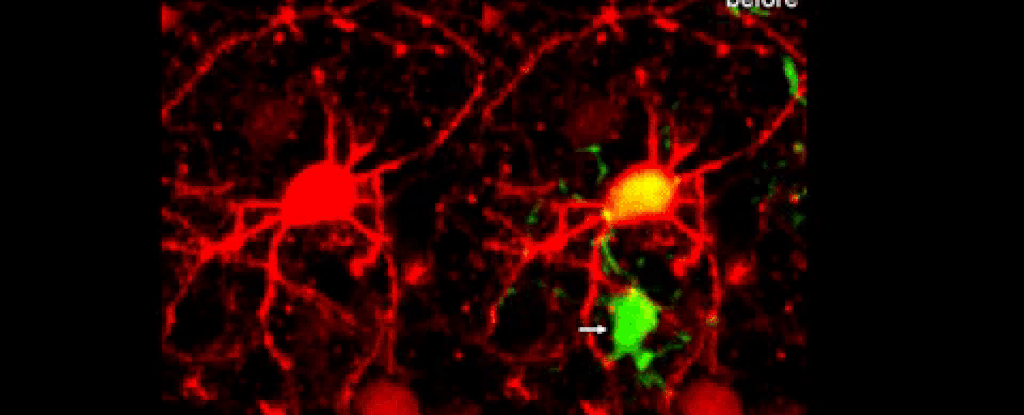
We already know that our brains have a waste disposal system that prevents dead and toxic neurons from obstructing our biological pathways. Now, scientists have managed to capture a video of the process for the first time, in laboratory tests on mice.
There are still a lot of things we don’t know about how dead neurons are removed and how the brain reacts to them, so new research could be a significant step in uncovering some of that, even if we haven’t confirmed yet that human brains they work in exactly the same way.
“This is the first time the process has been seen in a living mammalian brain,” says neurologist Jaime Grutzendler of the Yale School of Medicine in Connecticut.
Later, these findings could even inform treatments for age-related brain deterioration and neurological disorders: Once we know more about how brain cleansing is supposed to work, scientists can better diagnose what happens when something goes wrong. .
The team focused on the glial cells responsible for doing the cleaning job in the brain; They used a technique called 2Phatal to target a single brain cell for apoptosis (cell death) in a mouse, and then followed the path of glial cells using fluorescent markers.
“Instead of hitting the brain with a hammer and causing thousands of deaths, inducing a single cell to die allows us to study what happens right after the cells begin to die and observe the many other cells involved,” says Grutzendler. .
“This was not possible before. We can show very exactly what is happening and understand the process very clearly.”
Three types of glial cells (microglia, astrocytes, and NG2 cells) have been shown to be involved in a highly coordinated cell elimination process, which removes both the dead neuron and the pathways to the rest of the brain. The researchers observed that a microglia engulfs the neuron’s body and its main branches (dendrites), while astrocytes target the smaller connecting dendrites for removal. They suspect that NG2 may help prevent the spread of dead cell debris.
The researchers also demonstrated that if one type of glial cell omitted the dead neuron for whatever reason, other types of cells would assume their role in the waste removal process, suggesting that some form of communication is taking place between glial cells.
Another interesting finding from the research was that the brains of older mice were less efficient at removing dead neural cells, despite the fact that the junk removal cells seemed so aware that there was a dying cell there.
This is a good opportunity for future research, and could give experts an idea of how old brains start to fail in various ways, as the garbage removal service begins to dwindle or even breaks down.
Someday new treatments could be developed that can take over this cleansing process on behalf of the brain, not only in older people, but also in those who have suffered head trauma, for example.
“Cell death is very common in brain disease,” says neurologist Eyiyemisi Damisah of the Yale School of Medicine.
“Understanding the process could provide information on how to address cell death in an injured brain, from traumatic brain injury to stroke and other conditions.”
The research has been published in Scientific advances.
.